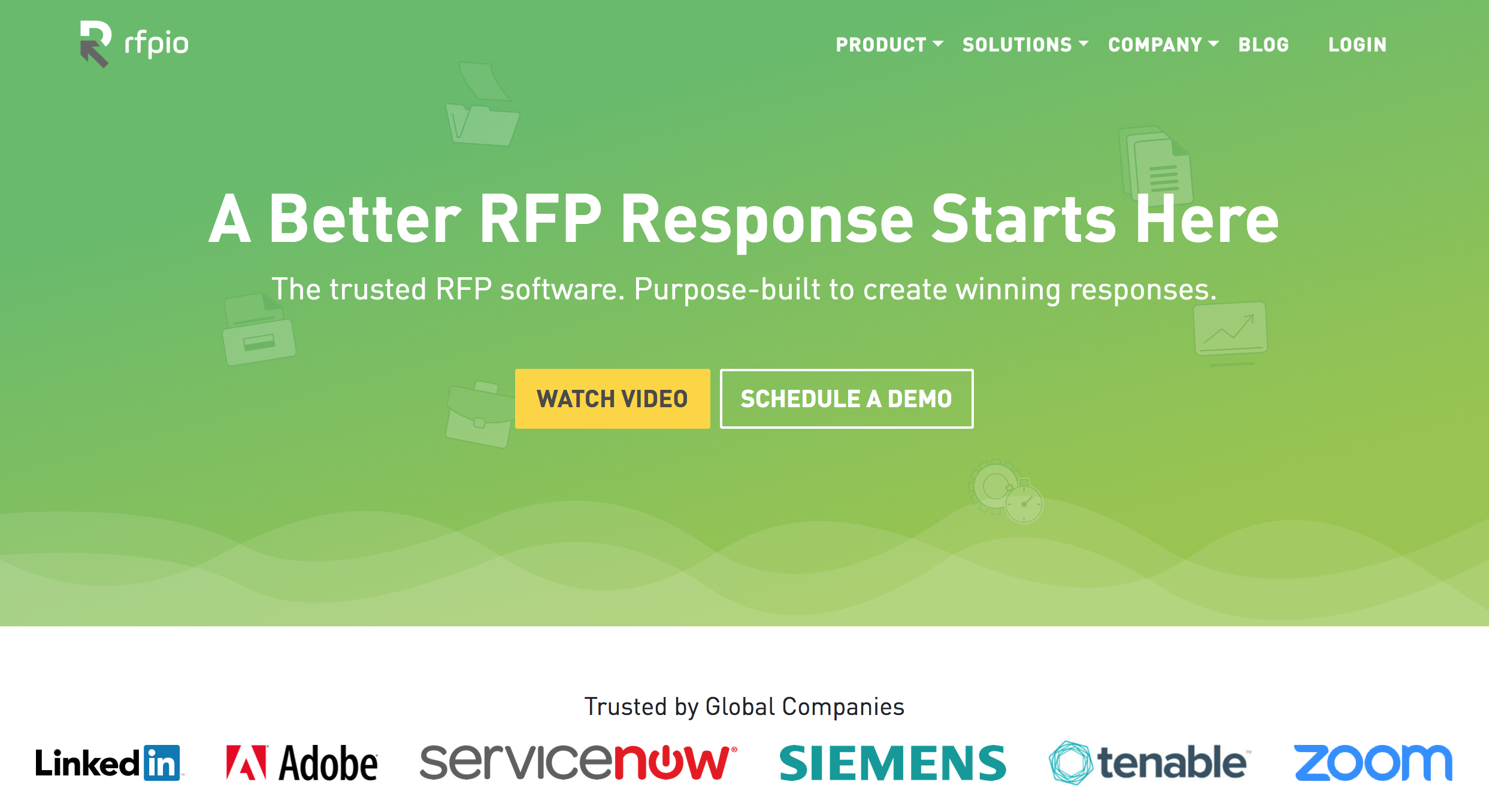
Helping Sales Race through the RFP Process
Requests for Proposals (RFPs) or Requests for Information (RFIs) are a way of life for many marketers and sales teams who work in the B2B space or who count nonprofits and government agencies among their clients. No one relishes the prospect of answering an RFP as they can mean hundreds of hours of work.
But, they can be a “bird in the hand.” It can be easier for a sales rep to take on an RFP than try to do the ambiguous, uncharted work of prospecting for new leads. Marketers often support sales teams in completing RFPs. Besides providing content, they can play a crucial role in ensuring sales doesn’t waste time on the RFP process.
Problems with RFPs
Anyone who has even peripherally encountered an RFP process knows that they can be a time suck. The issues with RFPs don’t stop there. Many RFPs are so badly written that they end up encouraging companies to make the wrong choice. Case in point: I worked for an organization who issued an RFP, but subsequently found that one of our top contenders for the project refused to complete the RFP. We chose another firm but ended up having to fire that firm and hire the firm that refused to respond to our RFP.
Another common RFP pitfall is the competitiveness. Some RFPs are written so that a vendor, already predetermined, wins the process, so they are simply a formality and a waste of time for everyone else. In other cases, organizations require a certain number of RFP responses, so it also invites additional competition which further reduces your chances of winning. Some stats say that the average win rate for an RFP is five percent.
There are many more common problems with RFP, so much so that the Association of Proposal Management Professionals launched a “Poor Procurement Language and RFP Hotline.” In short, RFPs can be a waste of account executives’ (AE) time and hurt the top of your funnel. It’s important that RFPs take up the least amount of your sales staff time as possible.
How to Save Time on RFPs
Saving time on RFPs is a combination of common sense and good processes. Here are some tips I’ve developed over my years of support sales teams.
Develop a screening process for deciding which RFI/RFPs you will take on.
It’s important to make sure you only sign up for the best RFP opportunities. Commonly, organizations have a process for a go/no-go decisions for RFPs. That includes data gathering and presenting to executives for approval to move forward. For instance, one of the largest software platform companies requires their AEs to go to their “Deal Desk” to get approval to respond to RFPs that take over a certain number of resource hours.
Here’s a sample screening process:
1. The AE reviews the RFP and answers a few key questions:
- What is the short and long term revenue opportunity?
Some companies only do RFPs that represent a revenue stream (short or long term) over a certain dollar amount. Others also consider the cost of the RFP response (based on resources and hourly rates) to evaluate the full ROI. - How aligned is the RFP opportunity to your key strategic goals?
This might be related to a type of customer or use case for your product or service. - Do you have a connection or “inside track” to the decision makers?
Can your execs connect with decision-makers in the organization to try to get more consideration for your RFP response? If you have no connections to the organization, filling out the RFP is basically like a 100+ hour cold call. - Is the organization issuing the RFP willing to engage before the RFP?
Often RFPs don’t have enough information for you to provide a tailored proposal. You’ll want to do some discovery with the issuing organization before you respond. Companies that do not allow you to do discovery don’t want quality proposals.
2. The AE brings the answers to #1 to a regular decision-making forum (deal desk, sales meeting, staff meeting, etc.). Stakeholders can discuss and decide whether to move forward with the RFP.
3. Sales Ops tracks the amount of time spent on RFPs and win-rate. This can help you can determine how to identify which RFPs make sense to respond to and which don’t in the future.
Appoint a project manager for each RFP and have a project plan.
The project manager can ensure that the right resources are assigned relevant tasks. Each team member should be working in parallel to complete the RFP. For smaller RFPs, the project manager may be the AE. For larger RFPs, you may need someone with project management experience. This reduces scrambling at the last minute and usually gives you a better quality response.
Don’t reinvent the content wheel.
Often you answer almost the same questions about your product in every RFP. It’s helpful to track the common questions and answers. This also gives you a chance to write the answers and have them reviewed by technical experts and editors when you aren’t in the heat of an RFP response.
Capture the common questions from your past RFPs and add new questions as you find promising content. Apps like RFPio or Loopio can help you store content, update content, and complete RFP templates if you have a complex product and/or get many intensive RFPs. A shared spreadsheet or Word doc can be used for simpler products and RFPs.
There should be one owner for RFP content in your organization who makes final decisions about what questions are developed and when to add new questions. This person should make sure technical staff review the answers at a regular cadence if your product changes over time (i.e., has new releases). Product marketing often plays this content owner role or at least plays a key role in maintaining this content at organizations that have a proposal management team.
Have a resource other than the AE do the formatting.
RFPs often request a certain format (which is usually annoying and difficult) for the final RFP response. It’s helpful if you use a product that can allow you to waste less time on formatting (see RFPio or Loopio mentioned above). Or, identify a resource who can do the formatting instead of using AE time to format Word documents and spreadsheets (sales ops, for example).
Track referrable customers.
Virtually all RFPs ask you to provide references. In some cases, I’ve been successful in pushing back on customer references at the RFP stage to reduce overuse of our customers for early-stage deals.
Even if you can convince your prospective client to wait on reference requests, you’ll eventually have to furnish references. AEs need to easily identify which customers are referenceable, which customer employee should be the reference contact, and details on what type of RFPs that the reference is relevant for.
There are apps on Salesforce that can support tracking references, but it’s also pretty easy to build a custom object in Salesforce to support tracking and reporting of references. Tracking this information is crucial so that AEs don’t accidentally offer references who are no longer happy with your company, reps don’t use the same customers all the time, and reps don’t spend a lot of time tracking down references each time you have an RFP.
Conclusion
Helping sales teams save time with RFPs can create greater collaboration between sales and marketing. With these tips, I hope you can set up processes to help your organization be more efficient. Do you have any other best practices to share?















